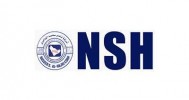Filter interviews by
Annai Infra Developers QC Engineer Interview Questions and Answers
Annai Infra Developers QC Engineer Interview Experiences
1 interview found

(4 Questions)
- Q1. Minimum grade of concrete
- Ans.
The minimum grade of concrete refers to the lowest strength that concrete can achieve.
The minimum grade of concrete is determined by the project requirements and specifications.
Concrete grades are denoted by a number followed by 'M' which represents the compressive strength in megapascals (MPa).
Common minimum grades of concrete include M5, M10, and M15.
For example, M5 concrete has a minimum compressive strength of 5 MP...
- Q2. Cube mould dimension.
- Ans.
Cube mould dimension refers to the size of the cube mould used in construction to test the compressive strength of concrete.
Cube mould dimensions are typically specified in millimeters.
The most common cube mould dimension is 150mm x 150mm x 150mm.
Other cube mould dimensions include 100mm x 100mm x 100mm and 200mm x 200mm x 200mm.
Cube moulds are made of steel or cast iron and have a removable base and lid.
Accurate cube ...
- Q3. M20 grade compresive strength
- Ans.
M20 grade compressive strength is a measure of the maximum load a concrete specimen can bear.
M20 grade concrete has a compressive strength of 20 megapascals (MPa).
It is commonly used in residential and commercial construction for foundations, beams, and slabs.
The compressive strength is determined by testing concrete cubes or cylinders at a specific age, usually 28 days.
The strength can be influenced by factors such as...
- Q4. Aggregate Impact Value test Is values
Interview Preparation Tips
Top trending discussions






Interview questions from similar companies

Interview Questionnaire
1 Question
- Q1. Total tests and There is codes
Interview Preparation Tips

I applied via Company Website and was interviewed in Nov 2024. There were 2 interview rounds.
(3 Questions)
- Q1. Do you refer structures drawings
- Ans.
Yes, I refer to structures drawings for design and construction purposes.
I refer to structures drawings to understand the design requirements
I use structures drawings to ensure compliance with building codes and regulations
I consult structures drawings during construction to ensure accuracy and quality of work
Examples: architectural, structural, and MEP drawings
- Q2. Do you refer rcp drawings
- Ans.
Yes, I refer to rcp drawings for engineering projects.
I regularly refer to rcp drawings to understand the layout and design of the project
Rcp drawings help me visualize the piping and instrumentation details
They are crucial for coordinating with other team members and ensuring accuracy in the project
- Q3. What are the process of construction building
- Ans.
The process of construction building involves planning, designing, obtaining permits, site preparation, foundation construction, framing, roofing, finishing, and inspections.
Planning: Determine the scope, budget, and timeline of the project.
Designing: Create architectural and structural plans.
Obtaining permits: Obtain necessary approvals from local authorities.
Site preparation: Clear the land and prepare it for constru...
(1 Question)
- Q1. How long will you work with organisation’s
- Ans.
I plan to work with the organization for the long term, as I am committed to growing and contributing to its success.
I am looking for a stable and fulfilling career with opportunities for growth and development within the organization.
I believe in building strong relationships with colleagues and stakeholders over time.
I am committed to continuously improving my skills and knowledge to add value to the organization.
I a...
Interview Preparation Tips
Friendly culture

The test is very difficult you have to complete all 20 questions which consist GC , subject related
(2 Questions)
- Q1. What is the wave trape?
- Ans.
A wave trap is a device used in electrical engineering to prevent unwanted signals or frequencies from entering a system.
Wave traps are typically used in power systems to filter out specific frequencies that can cause interference.
They are designed to allow only desired signals to pass through while blocking unwanted signals.
Wave traps can be used in substations, transmission lines, and other electrical systems to impr...
- Q2. Which types of circuit breaker use in substation
- Ans.
Types of circuit breakers used in substations include air circuit breakers, oil circuit breakers, vacuum circuit breakers, and SF6 circuit breakers.
Air circuit breakers are commonly used in low voltage applications.
Oil circuit breakers are used in high voltage applications.
Vacuum circuit breakers are compact and reliable, suitable for medium voltage applications.
SF6 circuit breakers are used in high voltage substations
Global warming ,covid-19, current affairs
Interview Preparation Tips

Quality Engineer Interview Questions & Answers
Sterling & Wilsonposted on 12 Oct 2023
I applied via Recruitment Consulltant and was interviewed in Sep 2023. There were 2 interview rounds.

(5 Questions)
- Q1. Bricks type and brick water absorption capacity
- Q2. Quality lab and site test of concrete
- Ans.
Quality lab and site test of concrete involves testing the strength, durability, and consistency of concrete samples.
Quality lab tests include compressive strength test, slump test, air content test, and temperature test.
Site tests involve sampling concrete from the construction site, conducting field tests like slump test and air content test, and monitoring curing conditions.
Quality engineers ensure that concrete mee...
- Q3. Pile foundation test, rebound hummer, uv test
- Q4. Silt content test
- Q5. Aggregate test flakiness and elongation test

I applied via Recruitment Consulltant and was interviewed in Aug 2023. There were 2 interview rounds.

(6 Questions)
- Q1. What is the types of Compressors?
- Ans.
Types of compressors include reciprocating, rotary, centrifugal, and axial compressors.
Reciprocating compressors use pistons to compress air or gas.
Rotary compressors use rotating mechanisms such as screws or vanes.
Centrifugal compressors use a rotating impeller to create centrifugal force.
Axial compressors use rotating blades to compress air in a straight line.
Examples include reciprocating air compressors, rotary scr...
- Q2. What are the Procedure to install the Centrifugal axial compressors?.
- Ans.
The procedure to install centrifugal axial compressors involves proper planning, alignment, assembly, and testing.
Ensure proper foundation is prepared to support the compressor
Align the compressor with the piping system for proper flow
Assemble the compressor components according to manufacturer's instructions
Test the compressor for performance and efficiency before final installation
- Q3. Types of pump and it's classifications?
- Ans.
Types of pumps include centrifugal, positive displacement, and axial flow pumps.
Centrifugal pumps: use centrifugal force to move fluid through the pump
Positive displacement pumps: move fluid by trapping a fixed amount and forcing it through the discharge port
Axial flow pumps: move fluid parallel to the pump shaft
- Q4. Lifting Plan Procedure?
- Ans.
A lifting plan procedure is a detailed plan outlining the steps and precautions to be taken when lifting heavy objects.
Identify the weight and dimensions of the object to be lifted
Determine the appropriate lifting equipment needed
Assess the location and environment for any obstacles or hazards
Assign roles and responsibilities to team members involved in the lift
Communicate clearly and follow the plan step by step
Conduc...
- Q5. Pumps Capacity?
- Ans.
Pumps capacity refers to the maximum flow rate a pump can handle.
Pumps capacity is typically measured in gallons per minute (GPM) or liters per minute (LPM).
It is important to consider the required flow rate when selecting a pump for a specific application.
Factors such as pump size, motor power, and system pressure affect the capacity of a pump.
For example, a centrifugal pump may have a capacity of 500 GPM, while a dia
- Q6. Methods statement of rotating and static equipment.
- Ans.
Methods statement for maintaining rotating and static equipment in mechanical engineering.
Regular inspection and maintenance schedules for both rotating and static equipment
Use of proper lubrication for rotating equipment to prevent wear and tear
Checking alignment and balance of rotating equipment to ensure smooth operation
Testing and calibrating static equipment for accuracy and efficiency
Following manufacturer's guid...
Interview Preparation Tips

Senior Quality Engineer Interview Questions & Answers
B.L. Kashyap & Sonsposted on 6 Jun 2024
(1 Question)
- Q1. Example of qa & qc
- Ans.
QA (Quality Assurance) focuses on preventing defects in the process, while QC (Quality Control) focuses on identifying defects in the product.
QA involves processes and procedures to ensure quality standards are met
QC involves testing and inspection to identify defects in the product
Example: QA - creating test plans, QC - executing test cases

Quality Engineer Interview Questions & Answers
Nasser S. Al Hajri Corporationposted on 3 May 2023

(4 Questions)
- Q1. About Quality management system
- Q2. Health Safety & Environment
- Q3. About Standard, Procedure & Specification
- Q4. Internal & External Audit
Interview Preparation Tips

QA QC Engineer Interview Questions & Answers
Navayuga Engineering Companyposted on 16 Feb 2024
(1 Question)
- Q1. What is concrete temperature
- Ans.
Concrete temperature refers to the temperature of freshly mixed concrete before it sets.
Concrete temperature affects the setting time and strength development of concrete.
It is important to monitor and control the temperature of concrete during mixing, transportation, and placement.
The ideal temperature range for concrete is typically between 50-75 degrees Fahrenheit.
Extreme temperatures can lead to issues such as ther...

Mechanical Engineer Interview Questions & Answers
Oceaneering Internationalposted on 13 Jun 2024
I applied via Naukri.com and was interviewed before Jun 2023. There was 1 interview round.
(2 Questions)
- Q1. Define SFD ,BMD
- Ans.
SFD stands for Shear Force Diagram and BMD stands for Bending Moment Diagram in structural analysis.
SFD shows the variation of shear force along the length of a beam or structure.
BMD shows the variation of bending moment along the length of a beam or structure.
Both diagrams are essential for analyzing the internal forces in a structure.
They are commonly used in civil and mechanical engineering for designing and analyzi...
- Q2. Calculate Thrust forces for beam
- Ans.
Thrust forces for beams can be calculated using equations of equilibrium and considering external loads.
Calculate the sum of all external forces acting on the beam.
Determine the direction of the forces (compression or tension) based on the beam's support conditions.
Apply equations of equilibrium to calculate the thrust forces at different points along the beam.
Consider any distributed loads or moments that may affect t...
Annai Infra Developers Interview FAQs
Tell us how to improve this page.
Interview Questions for Popular Designations
- QA QC Engineer Interview Questions
- Quality Engineer Interview Questions
- Senior Quality Engineer Interview Questions
- Senior QA QC Engineer Interview Questions
- Graduate Engineer Trainee (Get) Interview Questions
- Production Engineer Interview Questions
- Electrical Engineer Interview Questions
- Junior Engineer Interview Questions
- Show more
Interview Questions from Similar Companies
|
Site Engineer
30
salaries
| ₹1.5 L/yr - ₹4.2 L/yr |
|
Civil Site Engineer
17
salaries
| ₹2 L/yr - ₹5 L/yr |
|
Project Engineer
6
salaries
| ₹3.6 L/yr - ₹5 L/yr |
|
Plant and Machinery Incharge
5
salaries
| ₹3 L/yr - ₹3.6 L/yr |
|
Quantity Surveyor
5
salaries
| ₹2.2 L/yr - ₹3.8 L/yr |

DLF

Sobha

Prestige Group

Godrej Properties
- Home >
- Interviews >
- Annai Infra Developers Interview Questions >
- Annai Infra Developers QC Engineer Interview Questions








